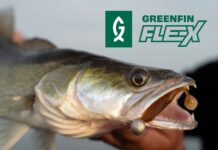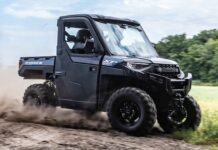In Ausgabe 2/2018 betrachtet Biologe Martin Friedrichs diese Fragen aus der wissenschaftlichen Perspektive. Hier die Liste der Forschungsarbeiten, die er für seine Antworten heran gezogen hat:
Bœuf, G., & Payan, P. (2001). How should salinity influence fish growth? Comparative Biochemistry and Physiology Part C: Toxicology & Pharmacology, 130(4), 411-423. doi:10.1016/s1532-0456(01)00268-x
Bry, C. (1996). Role of vegetation in the life cycle of pike. In J. Craig, F. (Ed.), Pike: Biology and exploitation. London: Chapman & Hall.
Craig, J. F., & Babaluk, J. A. (1989). Relationship of Condition of Walleye (Stizostedion vitreum) and Northern Pike (Esox lucius) to Water Clarity, with Special Reference to Dauphin Lake, Manitoba. Canadian Journal of Fisheries and Aquatic Sciences, 46(9), 1581-1586. doi:10.1139/f89-201
Eklöv, P., & Hamrin, F., H. (1989). Predatory Efficiency and Prey Selection: Interactions between Pike Esox lucius, Perch Perca fluviatilis and Rudd Scardinus erythrophthalmus. OIKOS, 56(2), 149- 156.
Engstedt, O., Stenroth, P., Larsson, P., Ljunggren, L., & Elfman, M. (2010). Assessment of natal origin of pike (Esox lucius) in the Baltic Sea using Sr:Ca in otoliths. Environmental Biology of Fishes, 89(3-4), 547-555. doi:10.1007/s10641-010-9686-x
Engström-Öst, J., Lehtiniemi, M., Jónasdóttir, S. H., & Viitasalo, M. (2005). Growth of pike larvae (Esox lucius) under different conditions of food quality and salinity. Ecology of Freshwater Fish, 14(4), 385-393. doi:10.1111/j.1600-0633.2005.00113.x
Jacobsen, L., Skov, C., Koed, A., & Berg, S. (2007). Short-term salinity tolerance of northern pike, Esox lucius, fry, related to temperature and size. Fisheries Management and Ecology, 14(5), 303-308. doi:10.1111/j.1365-2400.2007.00551.x
Jobling, M. (1981). Temperature tolerance and the final preferendum-rapid methods for the assessment of optimum growth temperatures. Journal of Fish Biology, 19(1), 439-455.
Karas, P., & Lehtonen, H. (1993). Patterns of Movement and Migration of Pike (.Esox lucius L.) in the Baltic Sea. Nordic Journal of Freshwater Research, 68(1), 72-79.
Kobler, A. (2007). Habitatwahl und Aktivität des Hechtes (Esox lucius L.) im Kleinen Döllnsee- Eine radiotelemetrische Untersuchung. (Diplomarbeit), Universität Hohenheim und Leibniz Institut für Gewässerökologie und Binnenfischerei (IGB) Berlin. Diplomarbeit.
Mann, R. H. K. (1976). Observations on the age, growth, reproduction and food of the pike Esox lucius (L.) in two rivers in southern England. Journal of Fish Biology, 8(1), 179-197.
Mann, R. H. K. (1982). The Annual Food Consumption and Prey Preferences of Pike (Esox lucius) in the River Frome, Dorset. Journal of Animal Ecology, 51(1), 81-95.
Owens, R. W., & Pronin, N. M. (2000). Age and Growth of Pike (Esox lucius) in Chivyrkui Bay, Lake Baikal. International Association of Great Lakes Research, 26(2), 164-173.
Rypel, A. L. (2012). Meta-analysis of growth rates for a circumpolar fish, the northern pike (Esox lucius), with emphasis on effects of continent, climate and latitude. Ecology of Freshwater Fish, 21(4), 521-532. doi:10.1111/j.1600-0633.2012.00570.x
Van Engel, W. A. (1940). The Rate of Growth of the Northern Pike, Esox lucius Linnaeus, in Wisconsin Waters. Copeia, 1940(3), 177-188.
Venturelli, P. A., Hyder, K., & Skov, C. (2016). Angler apps as a source of recreational fisheries data: opportunities, challenges and proposed standards. Fish and Fisheries. doi:10.1111/faf.12189
Venturelli, P. A., & Tonn, W. M. (2011). Diet and Growth of Northern Pike in the Absence of Prey Fishes: Initial Consequences for Persisting in Disturbance-Prone Lakes. Transactions of the American Fisheries Society, 135(6), 1512-1522. doi:10.1577/t05-228.1
Vollestad, L. A., Skurdal, J., & Qvenilld, T. (1986). Habitat use, growth, and feeding of pike (Esox lucius L.) in four Norwegian lakes. Archiv für Hydrobiologie, 108(1), 107-117.
Wieser, W., & Medgyesy, N. (1991). Metabolic rate and cost of growth in juvenile pike (Esox lucius L.) and perch (Perca fluviatilis L.): the use of energy budgets as indicators of environmental change. Oecologia, 87(1), 500-505.















